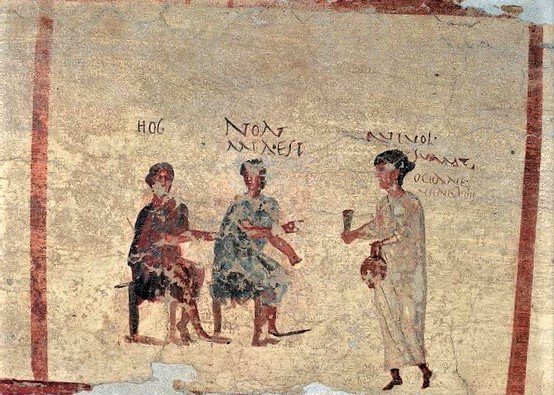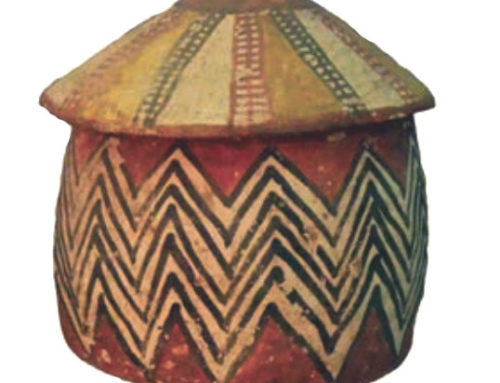
A barmaid brings a drink to two men sitting on chairs. The words show the men arguing about whose drink it is. (Caupona of Salvius, Pompeii, 79 AD) – this is not from the brothel of Pompeii, but it’s an activity that did take place in the brothel.
You need this book
Check out Sarah Levin-Richardson’s new book: The Brothel of Pompeii: Sex, Class, and Gender at the Margins of Roman Society.
It’s just out from Cambridge University Press, and it’s wonderful! Professor Levin-Richardson is at the University of Washington in Seattle, not far from where I usually live in Portland, so I have had several opportunities to hear her speak about her work as she was writing this book. She’s a great speaker, and this is a fantastic book.
Why’s it so great?
Well, for one, she’s really great at making sure we remember that the sex workers in the brothel were real people, with their own goals and their own problems. She doesn’t just “empower” them, and she doesn’t shame them or pity them. We get a really clear-headed look at how men and women came to be sex workers (mostly they were enslaved) and what they thought about it. Levin-Richardson also gives equal time to the men who used these sex workers’ services. She shows us how the cut-throat competitive atmosphere of Roman Italy in the first century AD followed clients into the brothel, and how they expressed their competitiveness in this sexual context.
How can we know?
Both clients and sex workers wrote graffiti all over the walls of the brothel. Then the eruption of Mount Vesuvius in AD 79 (most likely in October, as new evidence shows, rather than the traditional date in August) buried the whole building in ash and preserved the graffiti for archaeologist to find. Levin-Richardson has carefully read, catalogued, and translated all of these scraps of writing. They’re in the book – there’s an appendix at the end- but she has also figured out (where possible) who was writing and what they meant by it, and she lays it all out for you to enjoy.
What else is there?
Levin-Richardson also does a great job of thinking through what furniture they probably had in Pompeii’s brothels. (For one thing, the beds were built into the rooms.) What did they use for pillows? Were there little bedside tables? Did you get wine to drink?
Really, this is a great book and you will enjoy reading it. Don’t believe me? Read Sarah Bond’s more official review. Then go buy the book. If you click this link to buy it, I’ll get a penny or so.
Want to see more of these posts? Follow us on Twitter @Quatr_us.
Support this blog by visiting our Patreon: your $5 monthly takes the ads off five pages on this site. When pledges reach $1000 ($900 to go!) I’ll take all the ads off the entire site, for all of our visitors.




